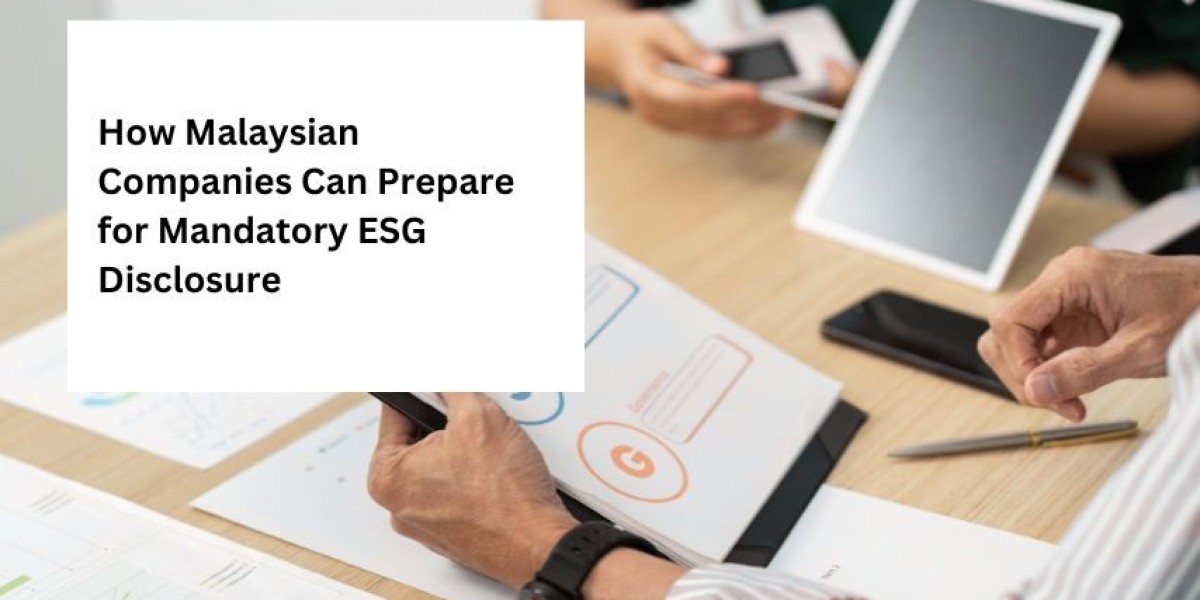The landscape for corporate reporting in Malaysia is undergoing a significant transformation. Bursa Malaysia has introduced enhanced requirements for mandatory ESG (Environmental, Social, and Governance) disclosure, signaling a clear shift towards greater transparency and accountability. For Malaysian companies, this is more than just a new compliance hurdle; it represents a fundamental change in how business performance is measured and communicated. Proactive preparation is no longer optional—it is essential for maintaining investor confidence, managing risks, and seizing new opportunities.
This article provides a comprehensive guide for Malaysian companies to navigate these new requirements. We will explore the details of Bursa Malaysia's guidelines, outline their implications, and provide actionable steps to build a robust ESG disclosure framework. By understanding what is required and how to prepare, your organization can move beyond simple compliance and integrate ESG principles into its core strategy for long-term, sustainable growth.
Understanding the New Bursa Malaysia ESG Disclosure Requirements
Bursa Malaysia's enhanced sustainability reporting framework, which took effect in phases starting from 2022, represents a major step up from previous guidelines. The goal is to align local reporting standards with global best practices, such as those set by the Task Force on Climate-related Financial Disclosures (TCFD). This move aims to provide investors and other stakeholders with more consistent, comparable, and decision-useful information about a company's sustainability performance.
For Main Market listed issuers, the requirements have been significantly expanded. Previously, reporting was based on a "comprehend, apply, and report" (CARE) model, which offered considerable flexibility. The new framework is more prescriptive, mandating disclosures on specific themes and metrics.
Key Components of the Enhanced Framework
The updated guidelines require companies to report on a set of common sustainability matters that are deemed material for all businesses, regardless of industry. These include:
- Corporate Governance: Disclosures related to a company's governance structure for managing sustainability risks and opportunities.
- Climate Change: Detailed information on climate-related risks and strategic responses.
- Labor Practices: Data on workforce diversity, health and safety, and employee relations.
- Community Engagement: Reporting on social investments and community impact.
Beyond these common indicators, companies must also report on industry-specific sustainability matters identified through a materiality assessment. A critical addition is the requirement for a Statement of Climate-Related Risks and Opportunities, which must align with the recommendations of the TCFD. This means companies need to disclose how climate change could impact their business, from physical risks like extreme weather to transition risks like changing regulations and market preferences.
Phased Implementation and Who is Affected
Bursa Malaysia has rolled out these requirements in phases to allow companies time to adapt.
- Phase 1 (FYE on or after 31 December 2022): Enhanced disclosures on governance, and voluntary reporting on TCFD-aligned disclosures.
- Phase 2 (FYE on or after 31 December 2023): Mandatory reporting on common sustainability matters for all Main Market companies.
- Phase 3 (FYE on or after 31 December 2024): Full TCFD-aligned disclosures become mandatory for Main Market companies.
ACE Market listed issuers have also seen their requirements enhanced, with a phased approach leading to mandatory reporting on prescribed sustainability information starting from the financial year ending on or after 31 December 2024. These companies are encouraged to adopt the Main Market framework to prepare for future expectations.
The implications are clear: ESG is no longer a niche concern but a central pillar of corporate reporting. Companies that fail to provide comprehensive and credible disclosures risk losing investor confidence, facing regulatory scrutiny, and falling behind competitors.
A Step-by-Step Guide to Preparing for Compliance
Navigating the path to full ESG compliance requires a structured and strategic approach. It involves much more than just gathering data for an annual report; it demands a deep integration of ESG considerations into your company's governance, strategy, and operations. Here are actionable steps your organization can take.
1. Establish Robust ESG Governance
Effective ESG management starts at the top. Without clear ownership and oversight, ESG initiatives can become fragmented and ineffective.
Create a Board-Level ESG Committee:
The board of directors holds ultimate responsibility for the company's ESG strategy and disclosures. Forming a dedicated board committee, or expanding the mandate of an existing committee (such as the risk or audit committee), is a critical first step. This committee should be tasked with:
- Overseeing the development and implementation of the ESG strategy.
- Reviewing and approving sustainability reports before publication.
- Ensuring that ESG risks are integrated into the company's overall risk management framework.
Appoint an ESG Management Team:
While the board provides oversight, a cross-functional management team is needed to execute the strategy. This team should include representatives from key departments like finance, operations, human resources, legal, and investor relations. Their role is to drive day-to-day ESG activities, from data collection to stakeholder engagement. Designating a Chief Sustainability Officer (CSO) or a senior executive to lead this team can provide the necessary authority and focus.
2. Conduct a Comprehensive Materiality Assessment
You cannot manage what you do not measure, and you cannot report on what you have not identified as important. A materiality assessment is the process of identifying and prioritizing the ESG issues that are most significant to your business and your stakeholders. This is a foundational requirement under the Bursa Malaysia framework.
How to Conduct a Materiality Assessment:
- Identify Potential ESG Issues: Brainstorm a long list of environmental, social, and governance topics relevant to your industry and operations. Consider global standards like the Global Reporting Initiative (GRI) and Sustainability Accounting Standards Board (SASB) for guidance.
- Engage Stakeholders: Gather input from key stakeholder groups, including investors, employees, customers, suppliers, regulators, and local communities. Use surveys, interviews, and workshops to understand their priorities and concerns.
- Assess Business Impact: Evaluate each ESG issue based on its potential financial and strategic impact on your company. This includes both risks (e.g., regulatory fines, reputational damage) and opportunities (e.g., new markets, operational efficiencies).
- Prioritize and Map: Plot the identified issues on a materiality matrix, with stakeholder importance on one axis and business impact on the other. The issues in the top-right quadrant are your material topics and should be the focus of your ESG strategy and reporting.
This process should be reviewed and updated annually to reflect changing business priorities and stakeholder expectations.
3. Develop a Data Collection and Management System
Credible ESG disclosure is built on accurate, reliable, and auditable data. Many companies find that their existing systems are not equipped to handle the complexities of collecting non-financial data.
Identify Key Performance Indicators (KPIs):
For each material ESG topic, define specific KPIs to track performance. For example, under climate change, you might track Scope 1 and Scope 2 greenhouse gas (GHG) emissions. For labor practices, you might track employee turnover rate and the number of workplace accidents. Ensure these KPIs are aligned with Bursa Malaysia's prescribed indicators.
Implement Data Collection Processes:
Establish clear processes for who is responsible for collecting the data, how it will be collected, and at what frequency. This may require new software systems or modifications to existing enterprise resource planning (ERP) systems. It is crucial to document these processes to ensure consistency and verifiability.
Ensure Data Quality:
Implement controls to ensure the accuracy and completeness of your ESG data. This could include internal reviews, cross-departmental checks, and eventually, third-party assurance. Treating ESG data with the same rigor as financial data is essential for building trust with investors.
4. Integrate ESG into Strategy and Risk Management
To meet the TCFD-aligned requirements, companies must demonstrate that they are not just reporting on ESG issues but are actively managing them. This requires integrating ESG considerations into the core of your business strategy and risk management processes.
Scenario Analysis for Climate Risks:
The TCFD framework requires companies to conduct scenario analysis to understand how different climate futures could impact their business. This involves:
- Identifying key climate-related risks and opportunities (both physical and transition risks).
- Developing plausible climate scenarios (e.g., a 1.5°C warming scenario vs. a 3°C warming scenario).
- Assessing the potential financial impact of these scenarios on your business.
- Using these insights to build a more resilient business strategy.
Incorporate ESG into Enterprise Risk Management (ERM):
ESG risks, such as supply chain disruptions from climate events or reputational damage from labor disputes, can have significant financial consequences. These risks should be formally integrated into your company's ERM framework. This means identifying, assessing, and mitigating ESG risks alongside traditional financial and operational risks.
5. Set Ambitious yet Realistic ESG Targets
Disclosure is not just about past performance; it is also about future direction. Setting public targets demonstrates your company's commitment to continuous improvement and allows stakeholders to track your progress over time.
How to Set Effective Targets:
- Baselines: First, establish a baseline for your key ESG metrics. You need to know where you are starting from before you can set a target for where you want to go.
- Science-Based Targets: For environmental targets, particularly GHG emissions, consider setting science-based targets. These are targets aligned with the scale of reductions required to limit global warming to 1.5°C, providing a credible and ambitious goal.
- Short, Medium, and Long-Term Goals: Break down your long-term ambitions into more manageable short- and medium-term targets. This makes it easier to track progress and maintain momentum.
- Action Plans: Each target should be backed by a clear action plan detailing the specific initiatives, investments, and timelines required to achieve it.
6. Enhance Stakeholder Engagement and Communication
ESG reporting is a form of communication. Your sustainability report should be a tool for engaging with stakeholders, telling your company's sustainability story, and building trust.
Tell a Cohesive Narrative:
Your report should do more than just present data. It should explain the "why" behind your ESG strategy. Connect your material issues, governance structures, performance data, and future targets into a cohesive narrative that shows how sustainability creates value for your business and society.
Use Clear and Accessible Language:
Avoid technical jargon and acronyms where possible. Present complex information using charts, graphs, and case studies to make it more digestible for a broad audience. The goal is to produce a report that is not only compliant but also engaging and informative.
Go Beyond the Annual Report:
Consider other channels for communicating your ESG performance. This could include a dedicated sustainability section on your corporate website, regular updates on social media, and presentations to investors. Consistent communication throughout the year keeps your stakeholders informed and demonstrates that ESG is an ongoing priority.
Moving Beyond Compliance to Strategic Advantage
While the mandatory disclosure requirements from Bursa Malaysia may seem daunting, they also present a powerful opportunity. Companies that embrace ESG are discovering that it is not just a cost of doing business but a driver of long-term value.
Effective ESG management can lead to:
- Enhanced Brand Reputation: A strong ESG profile can attract customers, talent, and community support.
- Improved Risk Management: Proactively managing ESG risks can make your business more resilient to unexpected shocks.
- Greater Access to Capital: A growing number of investors use ESG criteria to screen investments. Strong ESG performance can lower your cost of capital and open up new funding opportunities.
- Operational Efficiency: Initiatives to reduce energy consumption, water use, and waste can lead to significant cost savings.
- Innovation and Growth: Focusing on sustainability challenges can spur innovation and unlock new products, services, and markets.
The enhanced ESG disclosure framework from Bursa Malaysia is a clear signal that the expectations for corporate responsibility have been raised. By taking a proactive and strategic approach to preparation, Malaysian companies can not only ensure compliance but also build more resilient, competitive, and sustainable businesses for the future. The journey begins now.
Conclusion
Mandatory ESG disclosure is not just a regulatory obligation—it is a catalyst for positive transformation in the Malaysian corporate landscape. By thoroughly understanding the requirements, establishing strong governance, integrating ESG into strategy, and engaging stakeholders, companies can turn compliance into a strategic advantage.
Proactive preparation enables businesses to manage emerging risks, build stronger reputations, and unlock new opportunities for growth and innovation. Companies that act early and decisively will position themselves as leaders in sustainability, strengthening their competitive edge and appealing to a broader set of investors and stakeholders.
Ultimately, embracing ESG is about building a business that endures. By making sustainability a core part of corporate strategy, Malaysian companies can help shape a more responsible, resilient, and prosperous future for all.







